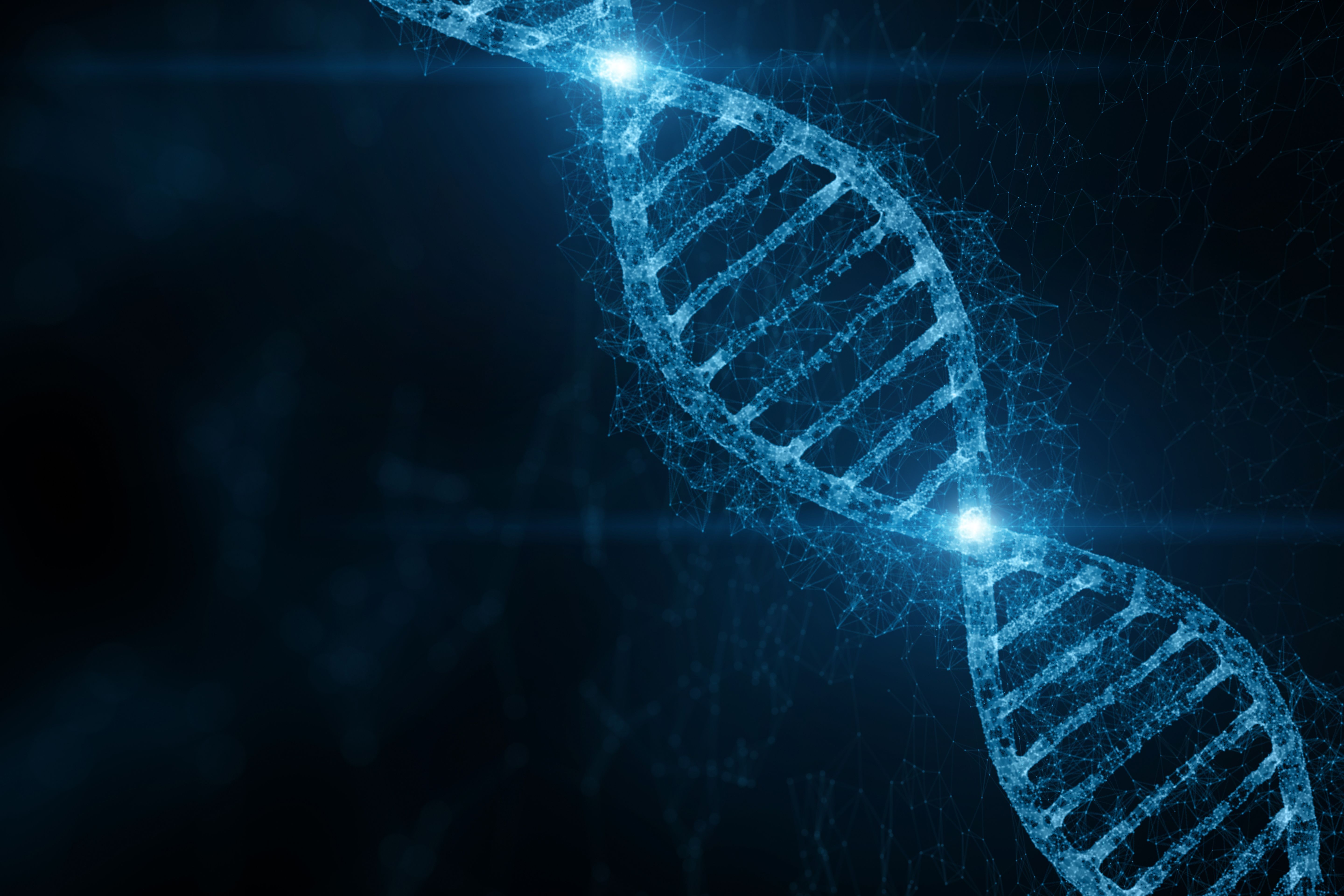A Capillary Electrophoresis with UV Absorption Spectrophotometric Detection Method Unveils Hidden Aspects of DNA's i-Motif Folding
A recent study published in Analytical Chemistry demonstrated the applicability of a capillary electrophoresis with UV absorption spectrophotometric detection (CE-UV) and multivariate curve resolution-alternating least-squares (MCR-ALS) to investigate the i-motif folding equilibrium under varying pH and temperature conditions (1).
Abstract blue colored shiny dna molecule on futuristic digital illustration background. | Image Credit: © robsonphoto - stock.adobe.com.

I-motifs are a class of nonstandard DNA structures with unique characteristics that make them crucial to understanding genetic regulation. However, their complex folding behavior and the challenges in separating their conformers have made it difficult for scientists to conduct extensive research on them. However, by using the CE-UV method coupled with MCR-ALS, the researchers, the research team was able to overcome these issues.
In their study, they leveraged 32 cm long fused silica capillaries permanently coated with hydroxypropyl cellulose (HPC), ensuring repeatability by implementing an appropriate conditioning procedure (1). Despite the advantages of CE-UV, the electrophoretic separation of folded and unfolded conformers in cytosine-rich i-motif sequences, such as TT, Py39WT, and nmy01, was challenging. Notably, Py39WT and nmy01 exhibited completely overlapping peaks (1).
To overcome this hurdle, the researchers employed multivariate curve resolution-alternating least-squares (MCR-ALS) to efficiently distinguish between the folded and unfolded species, even at different concentration levels. This was achieved by capitalizing on subtle differences in electrophoretic mobilities and UV spectra levels. Additionally, MCR-ALS provided quantitative information, enabling the estimation of melting temperatures (Tm) that closely matched those determined by UV and circular dichroism (CD) spectroscopies (1).
The findings underscore the potential of CE-UV combined with MCR-ALS as a powerful tool for gaining new insights into i-motif folding and other complex DNA structures. The method's ability to discriminate between distinct conformations of i-motifs without the need for costly techniques like NMR is a new discovery with important implications (1). For example, the technique allowed the discrimination between unfolded, 5′E, and 3′E conformations in the TT sequence (1).
Moreover, for Py39WT and nmy01, the method revealed two and three differently folded species, respectively, which remained hidden using traditional CD and UV spectroscopic techniques (1). This approach presents a cost-effective and efficient alternative for both qualitative and quantitative analysis of the folding equilibrium of i-motif structures, with potential applications extending to other DNA structures.
The study's success opens the door to future developments aimed at enhancing electrophoretic separation capacity and exploring online mass spectrometry detection (1). These advancements could further expand the method's characterization capabilities, potentially uncovering additional secrets of DNA structure and function (1). The groundbreaking CE-UV method offers an novel avenue for researchers in genomics and molecular biology to deepen their understanding of DNA's intricate folding dynamics, paving the way for exciting discoveries in the field.
This article was written with the help of artificial intelligence and has been edited to ensure accuracy and clarity. You can read more about our policy for using AI here.
Reference
(1) Bchara, L.; Eritja, R.; Gargallo, R.; Benavente, F. Rapid and Highly Efficient Separation of i-Motif DNA Species by CE-UV and Multivariate Curve Resolution. Anal. Chem. 2023, 95 (41), 15189–15198. DOI: 10.1021/acs.analchem.3c01730
New Study Investigates Optimizing Extra-Column Band Broadening in Micro-flow Capillary LC
March 12th 2025Shimadzu Corporation and Vrije Universiteit Brussel researchers recently investigated how extra-column band broadening (ECBB) can be optimized in micro-flow capillary liquid chromatography.
A Review of the Latest Separation Science Research in PFAS Analysis
October 17th 2024This review aims to provide a summary of the most current analytical techniques and their applications in per- and polyfluoroalkyl substances (PFAS) research, contributing to the ongoing efforts to monitor and mitigate PFAS contamination.
Characterization of Product Related Variants in Therapeutic mAbs
October 15th 2024Navin Rauniyar and Xuemei Han of Tanvex Biopharma USA recently discussed how identifying product-related variants through characterization enables the recognition of impurities that compromise the quality and safety of drugs.
New Study Investigates Optimizing Extra-Column Band Broadening in Micro-flow Capillary LC
March 12th 2025Shimadzu Corporation and Vrije Universiteit Brussel researchers recently investigated how extra-column band broadening (ECBB) can be optimized in micro-flow capillary liquid chromatography.
A Review of the Latest Separation Science Research in PFAS Analysis
October 17th 2024This review aims to provide a summary of the most current analytical techniques and their applications in per- and polyfluoroalkyl substances (PFAS) research, contributing to the ongoing efforts to monitor and mitigate PFAS contamination.
Characterization of Product Related Variants in Therapeutic mAbs
October 15th 2024Navin Rauniyar and Xuemei Han of Tanvex Biopharma USA recently discussed how identifying product-related variants through characterization enables the recognition of impurities that compromise the quality and safety of drugs.
2 Commerce Drive
Cranbury, NJ 08512

.png&w=3840&q=75)

.png&w=3840&q=75)



.png&w=3840&q=75)



.png&w=3840&q=75)
